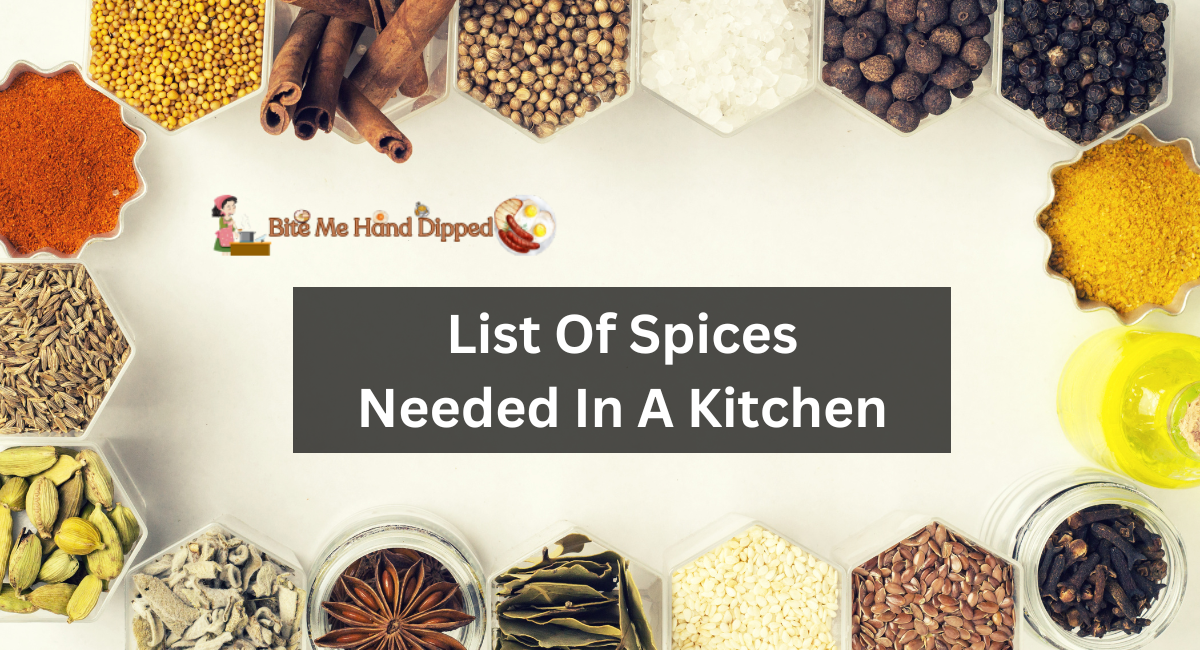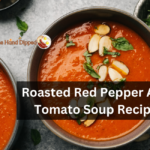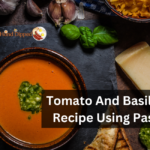Aromatic seasonings are derived from seeds, fruits, bark, rhizomes, and other plant elements. Used to season and preserve food and as perfumes, dyes, and medicines, spices have been highly valued as trade goods for thousands of years—the word herb derives from the Latin species, which means merchandise or wares. So, here are the list of spices needed in a kitchen.
Spices are sold in dried form, but that does not mean they have an indefinite shelf life; their potent flavors diminish over time, particularly when exposed to light and air.
List Of Spices Needed In A Kitchen
The proper spices convert an uninteresting, simple dish into a flavorful, five-star meal. Whether it’s a further kick of heat here or a mild, earthy freshness there, simple seasonings and herbs elevate the flavor of even the cheapest foods. Here is a list of essential culinary spices:
1. Salt
Don’t fret if you’re already scratching your head in confusion. Here is an overview of the various types of salt and when to use each.
- Sea Salt: Sea Salt is derived from the ocean and contains extra minerals. Since the crystals are more significant, sea salt is crunchy and quite salty in flavor.
- Kosher Salt: Kosher Salt is the salt with the largest, coarsest grains and the most versatility. It dissolves rapidly, which is useful when seasoning food. It is the most recommended and essential ingredient in my creations!
- Finishing salt: finishing salts are granular and irregular, making them ideal for garnishing (or finishing) a dish. They are occasionally flavored as well. They are optimal for garnishing but not for cooking.
- Table Salt: Table Salt is a highly fine-grained iodized salt. It is called “table” salt because it is typically presented in a salt shaker at dinner. The small granules facilitate the precise measurement of tiny quantities, such as when baking bread, cake, and other treats.
2. Black Peppercorns
If you cook at home, you frequently use black pepper in almost every delectable dish. Purchasing whole peppercorns means that the compounds within the pepper will not degrade as quickly, preserving the flavor longer.
There are white and pink chilies, too, for higher spicing levels, but plain old black peppercorns are lovely and vital in everything from cacao e pepe to black pepper curry chicken. Buy them whole and pulverize them in a pepper grinder for the best results.
3. Whole Or Ground Cumin
You know that earthy, aromatic, and faintly nutty flavor that chili has? It is frequently attributable to cumin, an incredibly versatile spice. It is ideal to purchase cumin in its whole form and grind it as required, as it will last longer.
It is critical in numerous spice mixtures, including curry and chili powder. But if you don’t have the time or energy, a small bottle of ground cumin is an acceptable alternative. Add it to roasted cauliflower or lamb linguine with eggplant.
4. Crushed Red Pepper Flakes Or Whole Dried Chiles
If you desire heat in your meals, chile flakes or whole dried chiles should be on hand. Crushed red pepper flakes are the type found in pizza restaurants’ shakers. They are produced from various peppers, but Cayenne is the most common ingredient.
A small amount of spice is helpful for many dishes, such as spicy guacamole or simply sprinkling it on your next plate of pasta and vegetables. Whole chile peppers help grind into curry pastes or simmer in a pot of legumes or chili before being fished out.
Look for dried chiles with a heat level with which you are comfortable; the following is a fast guide to the whole chiles most commonly found in the United States.
5. Turmeric
“Turmeric is an absolute necessity. “It is so adaptable,” Gould said. Valid, you may recognize the vibrant yellow-orange spice from its use in Indian and Thai cuisines and wellness food trends, but it has many other applications.
Turmeric is a member of the ginger family and has a delicate, aromatic flavor. Whether you add it to chicken and rice or ginger and turmeric noodle broth, high-quality turmeric is a game-changer in the home kitchen.
6. Bay Leaves
As one of the essential ingredients in French cuisine, bay leaves can appear enigmatic. After all, it is a whole desiccated leaf that you must typically remove from whatever it is added to.
Older bay leaves are indeed ineffective, but more recently, desiccated bay leaves have a beautiful, herbaceous aroma.
“Bay is one of those spices whose flavor is difficult to describe, but its absence is immediately noticeable. Please put it in a saucepan of panna cotta, potatoes, any soup or stock you’re preparing, or a lengthy braise of any meat.
And if you need clarification on whether your bay leaves are sufficiently fresh to make a difference, Gould suggests you break one in half and scent it. You should detect a delightful, floral, spicy aroma. If not, the object is likely on the elder side.
7. Ground Or Granulated Garlic
Garlic is a vital ingredient in the kitchen. Fresh is optimal, but we don’t live in an ideal world, so it’s a good idea to keep granulated or powdered garlic on hand to add a zesty, spicy garlic flavor whenever possible.
Youngman prefers granulated garlic to powdered garlic, while Gould prefers powdered garlic. Gould contends that the powdered form “has more surface area, which is what you want to spread flavor.”
It is an excellent complement to guacamole or spice mixtures. Youngman prefers granulated products. “Although dried garlic flakes (also known as minced garlic) and garlic powder are produced using similar methods, garlic powder is more pungent because a teaspoon contains more garlic than dried garlic flakes,” said Youngman. “I prefer the flakes because they rehydrate during cooking and impart a bite of garlic rather than the powder’s quickly dissolved pungent flavor.” There are no incorrect answers; use the garlic that works best for you.
8. Cinnamon
Cinnamon is essential to cooking, but you can also use it in savory dishes, and is a component of many spice blends. Gould observed that the origin of cinnamon has an impact on its flavor. “Most Americans are used to Indonesian cinnamon, which has that mellow, woody flavor.
If you’re searching for spicy cinnamon reminiscent of Red Hot candies, you should seek Vietnamese cinnamon.
9. Smoked Paprika
It imparts a subtle smokiness to a dish. It is a member of the same family as Cayenne but much milder. It conveys the smoke flavor exceptionally well. Like when you depart a campfire, your clothes are smoky.”
It is beneficial if you’re cooking vegetarian cuisine but want to imitate the smokiness that meat can impart to a dish. Consuming meat can enhance the flavor of other ingredients, such as roasted chicken or steaks.
10. Oregano
Oregano is a critical ingredient in many Mediterranean and Latin American dishes and one of the seasonings commonly found in pizza parlors.
The flavor is warm and slightly bitter, making it an excellent seasoning for various foods, including grilled shrimp, roasting poultry, roasted potatoes, and raw tomatoes.
11. Cardamom
Cardamom has a complex flavor with hints of citrus and mint and a piquant spiciness. You may know it best from delectable applications or as an ingredient in chai masala. However, numerous savory cardamom dishes exist, such as cardamom chicken with rice pilaf.
As in cumin seeds, cardamom is best stored whole, but when you don’t have time or mental energy to cope, it will work fine if you order it already ground.
A well-stocked kitchen should contain salt, pepper, garlic powder, onion powder, paprika, cumin, coriander, cinnamon, and oregano, among other essential seasonings. These versatile spices form the basis for a vast array of culinary creations, augmenting the flavor and variety of your cooking repertoire.
Thank you for reading….










